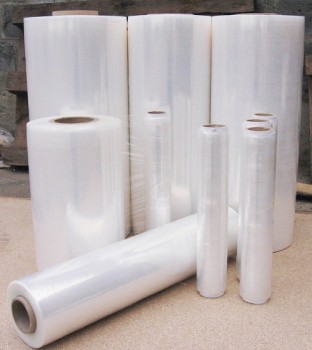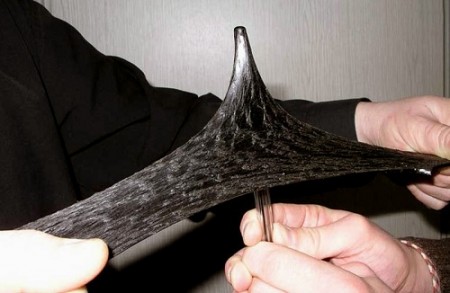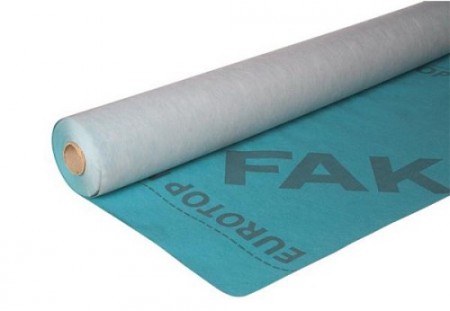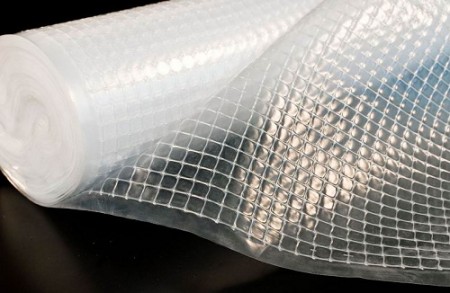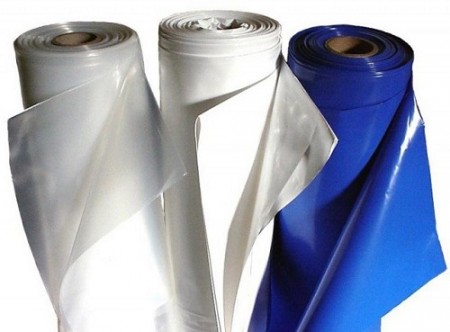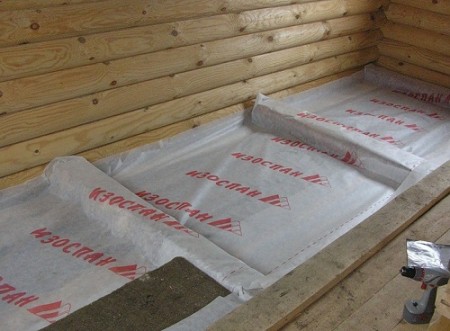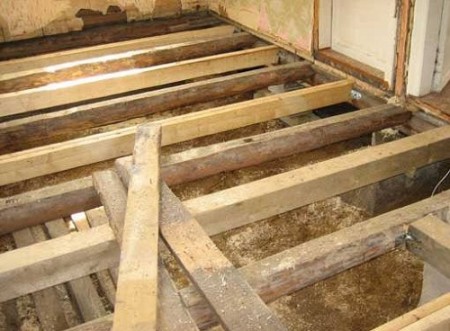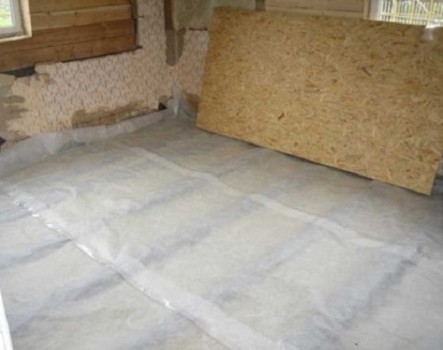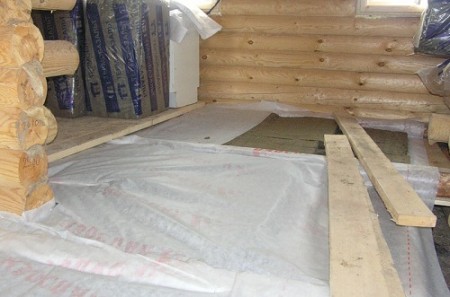Steam insulation is a necessary stage in construction works, which prevents the appearance of the greenhouse effect under the finishing materials. Condensate sooner or later appears in any residential building, as in the process of life of people a fairly large amount of moisture is released, in addition, such rooms as a kitchen and bathroom are rooms with high humidity, which also contributes to the formation of condensation. Most often, the roof and walls are covered with insulating materials even at the stage of building a house. But as for the vapor barrier of the floor, it is not always done in the process of construction. However, thanks to the device of floor coverings, all works on the vapor barrier can be carried out at any time during the repair process. Below we will look at the types of vapor barrier materials, and we will try to explain in detail how to lay the vapor barrier on the floor.
Content
Where is the vapor barrier required?
This type of insulation is necessary, first of all, in private country houses. The design of the house itself necessitates this type of work, since in the vast majority of cases on the ground floor of the house the floor is mounted directly on the ground. And in the absence of vapor barrier materials, the condensate, which is constantly formed both from the side of the house and from the outside, will gradually exert its destructive effect on the building. So, the vapor barrier of the floor in the wooden house must be installed without fail, in addition, it is necessary in saunas, baths, in the kitchen and bathrooms of city apartments, for the floor with parquet. In other words, it is necessary to install a vapor barrier wherever excess condensate can destroy the finishing materials, in rooms with excessive humidity, and also in the rooms located directly above the cellars. Laying the vapor barrier is necessary when using such "fastidious materials as laminate and parquet.
Types of materials for vapor barrier
Before starting the installation of vapor barrier materials, it is necessary to at least superficially familiarize yourself with the technology of work and choose the right material. The following materials are on sale:
- Polyethylene film.
- Liquid rubber.
- Diffuse membrane.
- Polyethylene film. There are several types of this vapor barrier material: coated with an aluminum layer, perforated and not perforated. For floor steam insulation in a residential house, any of the listed options will do. However, masters most often prefer a perforated film for vapor barrier in living rooms, and an aluminum coated film for rooms with high humidity. An important point - when working with this type of vapor barrier materials, it is necessary to have a gap for ventilation. Despite the good vapor barrier and waterproofing characteristics, polyethylene film can not be considered a practical material. It is easily damaged, so it is necessary to work with the film very carefully. At the slightest damage, the polyethylene film loses its properties, and will not cope with its function.
- Reinforced polyethylene filmIt is a rather strong material consisting of three layers. Two outer layers are made of a special light-stabilized film - high pressure polyethylene. Between them is a reinforcing mesh.
- Polypropylene film. It has good strength, but moisture condensation is easily formed on its surface. The problem is solved by using a reinforced version of a polypropylene film in which one of the layers is made of cellulose fibers and viscose. These materials perfectly absorb moisture and prevent condensation. When laying reinforced film it is important to ensure that the anticondensate layer is at the bottom. As in the case of polyethylene film, when installing polypropylene it is necessary to leave a ventilation gap, although a film of propylene is considered a more qualitative vapor barrier material.
- Diffuse membrane. On the vapor barrier, as, indeed, on other building materials, it is not worth saving. If in the construction of a residential house the emphasis is on quality and durability, then when choosing a vapor barrier material, preference should be given to diffuse membrane materials. Due to the special arrangement of this material, the membranes can be laid without venting gap. Diffuse membrane independently regulates the percentage of incoming moisture and removes its excess. Membrane films are one- and two-sided. When laying a single-sided membrane, it is necessary to lay the material with the correct side according to the instructions. Diffuse membranes are also classified according to the number of layers of the material. The more layers - the better and more expensive the vapor barrier material. When buying a good multi-layer material, several problems are solved simultaneously: with vapor barrier, hydro- and heat insulation. Despite the high cost of multi-layer membranes, the buyer remains in the win, as there is no need to buy a heater and waterproofing
- Liquid rubber. This material is produced on a bitumen-polymer base and is a strong, hermetically sealed, seamless film, while performing the functions of heat and waterproofing.
The material is applied to the surface using an ordinary paint brush. A layer of liquid rubber perfectly protects the floor covering from moisture and condensation.
As for the brand of vapor barrier materials, the steam insulation of the floor is very popular on the domestic market. This material has won the trust of customers due to its reliability, excellent protective characteristics and a wide range of applications - this material is used not only for the floor, but also for insulation of the roof, walls and attics.
Correct vapor barrier for the wooden floor. Step-by-step instruction
As is clear from all of the above, the main task of the vapor barrier material is to prevent the penetration of moisture in the form of steam to the wooden floor elements and insulation. For this reason, the vapor-insulating materials are always laid between the "clean" floor and the heater. Quite often the vapor barrier is laid in several layers, while the second layer is mounted between the rough floor and the heater. The task of the second layer of vapor barrier is to prevent moisture from entering the ground. Sometimes a waterproofing film or membrane is used as the second layer of vapor barrier. An additional layer of insulation is required for the first floors of wooden buildings, where the floor is mounted directly on the ground, as well as for living areas above the cellars.
The sequence of works on laying the vapor barrier is as follows:
device and rough floor preparation
Before laying insulation material, all wooden floor elements are carefully treated with antiseptics. If the vapor barrier is installed during the repair work, the floor covering is dismantled, all old insulation, if any, is discarded. Underground flooring is thoroughly cleaned from dust and debris, the rough floor is treated with antiseptic agents.
installation of the first vapor barrier layer
The first layer of insulation is laid to block the access of moisture to the heater. The roll of the film is unwound and the blade is rolled onto the floor frame. The overlap of the material strips should be at least 15 centimeters. Strips are connected with each other using a tape or tape. Thus, it is possible to avoid the appearance of gaps and cracks through which moisture can get into the heater.
To the lag, the insulation is attached using a stapler or nails with an anti-corrosion coating.
laying of heat-insulating material
Between the lags, a layer of insulation is laid on top of the vapor barrier. For this, various materials are used: mineral wool, foam plastic, expanded polystyrene, etc. The heater must be laid in such a way that it fits snugly against the lags, without gaps or cracks.
installation of the second vapor barrier layer
The second layer is already a direct vapor barrier, an obstacle to steam from living quarters. The film is laid on top of the logs with a ventilation gap between the insulation and the finish surface of the floor. As in the first case, the insulation strips must be connected together by adhesive tape or mounting tape. After that, the installation of the vapor barrier is considered finished, and it is possible to start installing the boards of the finishing floor.
If before you read this material you doubted whether you need a vapor barrier on the floor, or you can save and do without it, now, we hope that all the questions have disappeared. It is unacceptable to economize on the construction of one's own dwelling, and the steam insulation of the wooden floor is the most important stage of construction work, which is highly flippant to neglect.
https://www.youtube.com/watch?v=zxLwqozdPL8




